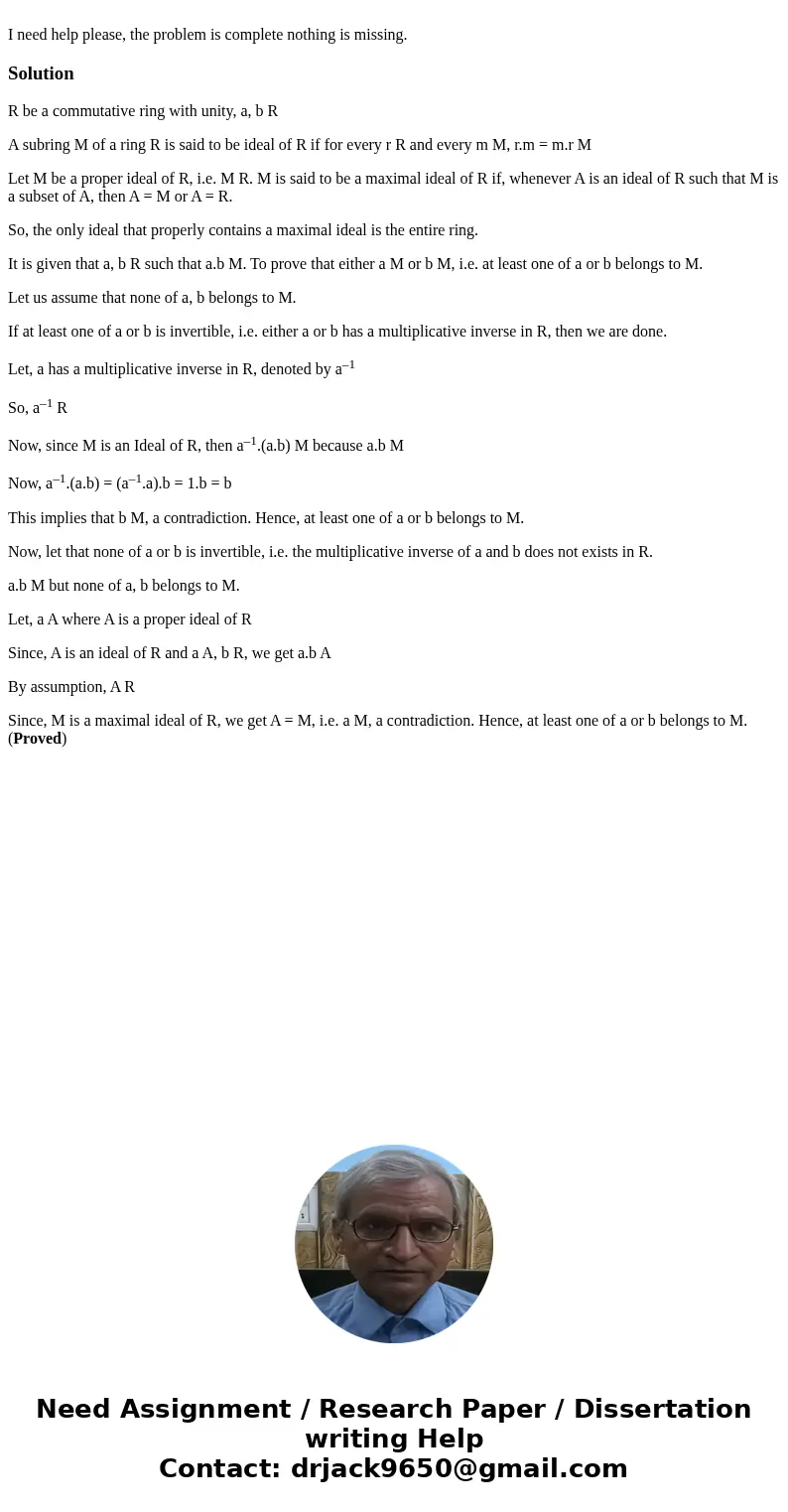I need help please the problem is complete nothing is missin
I need help please, the problem is complete nothing is missing.
Solution
R be a commutative ring with unity, a, b R
A subring M of a ring R is said to be ideal of R if for every r R and every m M, r.m = m.r M
Let M be a proper ideal of R, i.e. M R. M is said to be a maximal ideal of R if, whenever A is an ideal of R such that M is a subset of A, then A = M or A = R.
So, the only ideal that properly contains a maximal ideal is the entire ring.
It is given that a, b R such that a.b M. To prove that either a M or b M, i.e. at least one of a or b belongs to M.
Let us assume that none of a, b belongs to M.
If at least one of a or b is invertible, i.e. either a or b has a multiplicative inverse in R, then we are done.
Let, a has a multiplicative inverse in R, denoted by a–1
So, a–1 R
Now, since M is an Ideal of R, then a–1.(a.b) M because a.b M
Now, a–1.(a.b) = (a–1.a).b = 1.b = b
This implies that b M, a contradiction. Hence, at least one of a or b belongs to M.
Now, let that none of a or b is invertible, i.e. the multiplicative inverse of a and b does not exists in R.
a.b M but none of a, b belongs to M.
Let, a A where A is a proper ideal of R
Since, A is an ideal of R and a A, b R, we get a.b A
By assumption, A R
Since, M is a maximal ideal of R, we get A = M, i.e. a M, a contradiction. Hence, at least one of a or b belongs to M. (Proved)

 Homework Sourse
Homework Sourse